FamiBlog
Dear parents-to-be
Go to:
Pregnancy calendar
-
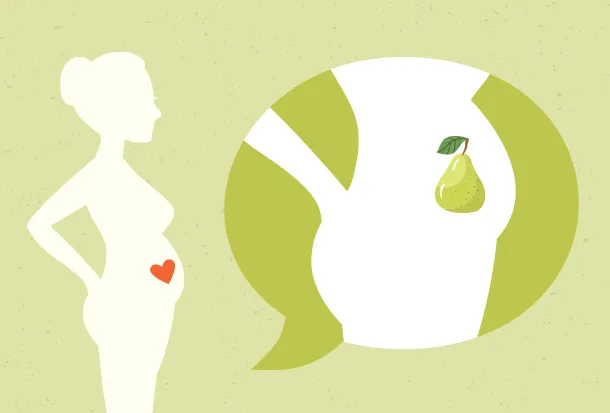
14th week of pregnancy – development of the baby and well-being of the mother
The 14th week of pregnancy is the time when the baby developing in the uterus begins to resemble a newborn in miniature. It is still growing intensively and very actively, but the future mother does not feel its movements yet – she has to wait a few more weeks for it. The 14th week of pregnancy is the beginning of the second trimester. Most women in the 14th week of pregnancy begin to feel much better – the discomfort of the first trimester disappears and energy returns. However, the expectant mother should not overdo her activity and remember the right dose of rest. 14th week of pregnancy – what month is it? Although the age of pregnancy is usually expressed in weeks, many expectant parents wonder what month is the 14th week. This information can be useful in different situations. Therefore, it is worth knowing that this is the 4th month and the beginning of the second trimester (more precisely, week 2). It is considered by most pregnant women as a very pleasant time to wait for the baby and prepare for motherhood. How is the baby in the 14th week of pregnancy? A child in the 14th week of pregnancy already measures around. 9 cm. Its weight is 25 g. It gets bigger and bigger every week, because the second trimester is a time of very intense development. The baby begins to resemble a newborn in miniature – its proportions change, although the head is still slightly larger than the rest of the body. The infant has developed fingers, and facial features are changing as eyes and ears slowly move into place. All of the child’s internal organs are also growing and developing intensely. New neurons are being formed in the brain every day. The thyroid gland begins to secrete hormones. The internal genitals are also formed. The 14th week of pregnancy is spent in intense physical activity. This strengthens its skeletal and muscular system. In addition, the child is already able to suck his thumb, tune his face and practice swallowing. Since there is still a lot of space in the uterus, the baby’s movements are not yet noticeable to the expectant mother in the 14th week of pregnancy. Therefore, their absence should not be a cause for concern. The first clear kicks will appear only in a few weeks, so it is worth being patient. Bauchumfang in der 14. Schwangerschaftswoche The size of the abdomen at 14 weeks of pregnancy is an individual matter for each woman. These are pregnant women in whom it is clearly rounded and visible. But some expectant mothers at this stage of pregnancy may still hide the fact that they are expecting a child. Everything depends on many factors: Figure, weight, genes, etc. However, it is worth starting to look for loose clothes and underwear that will not stick to the skin and do not put pressure on the belly. Complaints in the 14th week of pregnancy Most women consider the second trimester as the best time to wait for a child. During the 14th week of pregnancy, unpleasant symptoms such as nausea, vomiting and drowsiness disappear. The future mother has a better mood and more energy, so she can fully enjoy her condition. Moderate physical activity, walks, outdoor activities, and professional work (all within reason and as long as your health permits) are recommended. However, you should not forget about rest and sleep. However, it also happens that unpleasant symptoms appear in the 14th week of pregnancy. A future mother may: feel back and muscle pain due to a growing uterus, have frequent nosebleeds due to mucosal congestion, feel cramps in the calves at night feel increased pressure on your bladder have trouble sleeping have an increased appetite have swelling in the legs. In turn, many women in the 14th week of pregnancy see their hair improve. They become thicker and shinier, they also stop breaking and falling out. Hormonal changes are responsible for this.Read more -
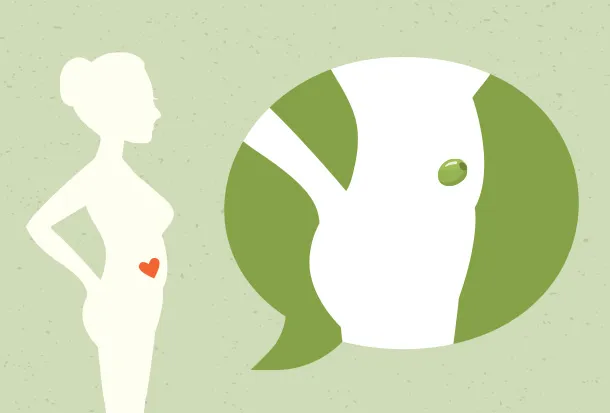
6th week of pregnancy – what happens in the body of mother and child?
In the 6th week of pregnancy, you no longer have any doubt that you will soon become a mother. This is the moment when the gynaecologist can confirm the presence of the embryo in the womb. Despite your great joy, your mood may deteriorate. This is all due to the sharp rise in hormones and the appearance of the first pregnancy symptoms.Read more -
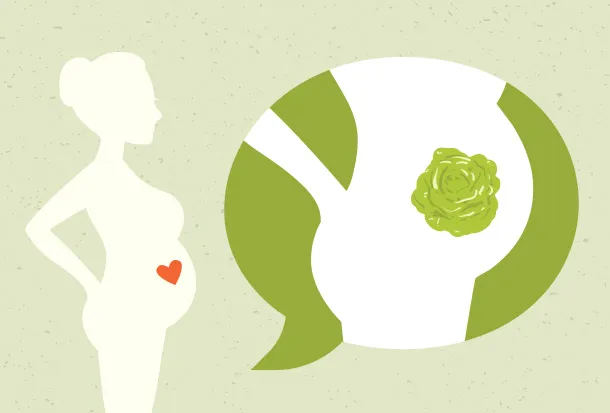
23rd week of pregnancy – what changes take place in the pregnant woman’s body and how does the foetus develop?
The 23rd week of pregnancy is the end of the second trimester. The expectant mother notices more and more changes in herself – the abdominal girth and weight continue to increase and the first irregular contractions occur. The foetus is developing intensively and has already developed its senses.Read more -

15th week of pregnancy – how do mom and baby feel?
The 15th week of pregnancy is usually a quiet time. Pregnancy discomforts from the first trimester are resolved, so the future mother can fully concentrate on waiting for the baby. It is important for her to take care of herself and avoid unpleasant and stressful situations – in the 15th week of pregnancy the baby can perfectly feel the mood of the mother. If the doctor does not find any contraindications, it is worthwhile to enroll in organized gymnastics classes for expectant mothers, such as yoga, in the 15th week of pregnancy. These can help prevent back pain, which is a nuisance for many pregnant women. In addition, moderate physical activity allows you to maintain a normal body weight, improves your mood, reduces stress and supports your immunity. You can also exercise at home with prior consultation with a physical therapist or personal trainer who works with pregnant women. Physical activity should go hand in hand with a properly balanced diet. 15th week of pregnancy – what month is it? Usually doctors and expectant mothers use weeks to determine the age of pregnancy. But you should also know in which month of pregnancy is the 15th week. Calculated from the first day of your last period (according to the Naegeli rule), it is the 4th month, which is the beginning of the second trimester. If you have difficulty calculating your gestational age, you can use online calculators. What does the baby look like at 15 weeks of pregnancy? Your baby is growing very fast in the 15th week of pregnancy. It is already about 10 cm long (measured from the top of the head to the buttocks). In the second trimester, the baby gains weight more slowly because it has not yet developed fatty tissue. Your baby’s weight at 15 weeks of pregnancy is about 70 g.During the 15th week of pregnancy, the baby’s muscles develop and strengthen. Your baby will therefore be very active, swinging its arms and legs in all directions. It will also make faces and suck its fingers. Although the baby is very active, its movements are not noticed by the expectant mother during the 15th week of pregnancy.In the 15th week of pregnancy, the baby can hear its mother’s voice, which has a calming effect on it. It can also detect emotions and moods. When a woman is relaxed and calm, the baby is also in a good mood. Moreover, the 15th week of pregnancy is the time when: the baby prepares to breathe by swallowing fetal water; the baby’s skin is translucent and covered with fur (lanugo); the endocrine organs (pancreas, thyroid gland) begin to function; the baby’s internal organs grow and develop. The feelings of the mother in the 15th week of pregnancy It is believed that the second trimester is the best time of pregnancy. All because unpleasant pregnancy symptoms are over and the future mother feels a sudden surge of energy. It is worth using it to take care of yourself (both physical and mental well-being) and to build an emotional bond with your child. Despite the significantly improved well-being of pregnant women, the 15th week of pregnancy is not completely free of symptoms. Some women may experience back pain due to the enlargement of the abdomen and breasts and the change in center of gravity. Other pregnant women complain of constipation and bloating. These symptoms are caused by a slowing of intestinal peristalsis. Besides, appetite increases in the 15th week of pregnancy. So it is worth checking your diet (it should be balanced and provide essential elements and vitamins) and do not give in to ravenous hunger during pregnancy. Belly at the 15th week of pregnancy In the 15th week of pregnancy, your belly may already be visibly rounded. At this stage you need to change your wardrobe, because your previous clothes are no longer comfortable. It is best to buy pants and skirts with elastic, as well as slightly looser blouses. Remember that the size of the belly in the 15th week of pregnancy is an individual matter for each woman.Read more -

Week 5 of pregnancy – what happens in the body of mother and child?
The fifth week of pregnancy is the time when you will almost certainly become a mother. The pregnancy test shows two lines. You have probably already noticed the first symptoms. Remember that these will not be as bothersome in the later stages of pregnancy. Get plenty of rest, eat a healthy diet and, above all, listen to your body.Read more -

16th week of pregnancy – how is the baby developing? Well-being of the expectant mother
The 16th week of pregnancy is the time when the baby is very active. However, his mother does not yet feel the movements of the baby. Although this is one of the most anticipated moments of pregnancy, you still need to be patient. Very often at this stage parents find out the sex of their baby. The period around the 16th week of pregnancy is sometimes called the “pregnancy honeymoon” by many mothers. It is associated with a really good mood, an increase in energy and the disappearance of the complaints characteristic of the first trimester. If there are no contraindications, the pregnant woman does not have to give up any activities – she can continue to work or engage in regular physical activity (adapted to her condition). However, you should not forget about rest and healthy sleep. 16th week of pregnancy – what month is it? Although gestational age is usually expressed in weeks, it is useful to know which month the 16th week of pregnancy falls on. This information can be useful in different situations. Remember that this is the 2nd trimester of your pregnancy and also the end of the 4th month. This means that the halfway point will soon be reached. Baby at 16 weeks of pregnancy The weight of the baby in the 16th week of pregnancy is already over 80 grams, and its length, measured from the top of the head to the buttocks, is over 11 centimeters. The baby is growing very fast. His body proportions are also changing, so that eventually he begins to resemble a small newborn. Its skin is still very thin and covered with fur (lanugo). It lacks the subcutaneous fat that will develop in a few weeks. It uses every moment to exercise its locomotor system: It wiggles its arms and legs, turns and wriggles. The baby’s movements are not yet noticeable to the mother. You have to wait a few weeks for them.When an ultrasound scan (USG) is performed at 16 weeks of pregnancy, it is quite possible that the expectant parents will learn the sex of their baby. Also remember that at this time the little one hears sounds coming from outside. He especially likes his mother’s voice. Play him lullabies or quiet music. Feelings of the mother in the 16th week of pregnancy The mood of the mother in the 16th week of pregnancy is usually very good. Morning sickness and excessive sleepiness have disappeared. The belly in the 16th week of pregnancy is already much larger and rounder, so a change of wardrobe becomes necessary.Some women may experience unpleasant pregnancy symptoms. The most common symptoms in the 16th week of pregnancy are: Heartburn, constipation, hot flashes, weak gums, back pain, problems with concentration. However, as a rule, they are not too serious, so the future mother in the 16th week of pregnancy can fully enjoy the time of waiting for the baby. Well-being in the 16th week of pregnancy? Despite the fact that in the 16th week of pregnancy the mother has a lot of energy, she should remember to rest. Light physical exercises are recommended, which not only reduce back pain, but also help prepare the body for childbirth. About what activity is safe, it is worth asking your doctor.The future mother should also pay attention to her diet. It is good to include in the diet products rich in calcium, because during this period the baby’s bones are strengthened. Therefore, it is worth eating more dairy products, as well as almonds, white beans, tofu, spinach, arugula and kale. Your diet should be tailored to your body’s needs.At 16 weeks of pregnancy, it is worth considering enrolling in a childbirth preparation class. These are classes led by a midwife. They take the form of lectures and exercises. Among other things, the future mother learns how to breathe properly during labor and how to care for a newborn. You can go to antenatal classes with the baby’s father or another close person (for example, mother or a friend).Read more
Illnesses during pregnancy
-

Lowering of the Belly During Pregnancy
Read more -
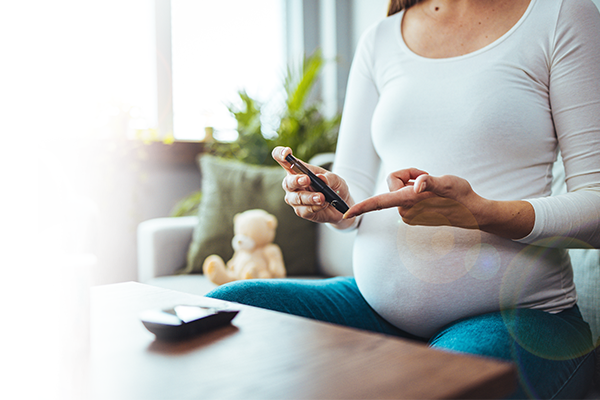
Gestational diabetes – Is it dangerous? How is it detected and treated?
Read more -

Acne during pregnancy
Read more -

Rash during pregnancy – a physiological change or a disease?
Read more -

Parvovirus B19 infection during pregnancy
Read more -

What does kidney pain during pregnancy mean? What to do if you experience discomfort?
Read more
Pregnancy information
-

Exercise during pregnancy – safe physical activity
Read more -

Lemon balm during pregnancy – is it safe?
Read more -

Electrolytes in pregnancy
Read more -

Beauty treatments during pregnancy – what’s safe and what should be avoided?
Read more -

Which foods should be avoided during pregnancy?
Read more -

Pregnancy after the age of 35
Read more
News
-

Lidia’s story – Stem cell therapy for cerebellar spinocerebellar ataxia
Lidia was born prematurely at 29 weeks gestation. In her first year of life, the girl was diagnosed with spinal-cerebellar ataxia and Hirschsprung’s disease. Spinal-cerebellar ataxia is a rare neurological disorder characterised, among other things, by difficulties in motor coordination. Hirschsprung’s disease is a rare, congenital disorder of intestinal innervation that is genetically determined.Read more -

Stem cell treatment for infertility
Infertility is a problem that affects about 15% of couples worldwide. For this reason, specialists from all over the world are constantly looking for new treatment options. One possibility seems to be the use of stem cells in therapy. Infertility problem The term “infertility” refers to the inability to become pregnant with regular sexual intercourse for at least one year (with some exceptions) without the use of contraceptives. The problem of infertility is very real today. Interestingly, the percentage of each type of infertility, i.e. male, female and idiopathic, is almost identical and is about 30% in each case. Although the clear causes for the increasingly frequent problems in childbearing are not known, many experts see air pollution and the high level of food processing as the cause of this phenomenon. Drugs used in chemotherapy for cancer treatment, for example, are also sometimes the cause of infertility. Despite the methods available to treat infertility and assisted reproductive techniques, many couples cannot wait to have children. Use of stem cells in the treatment of infertility In the context of infertility studies, scientists have wondered why females of certain species remain fertile throughout their lives, even though every woman reaches menopause at some point in her life. According to previous knowledge, each woman is born with a limited number of eggs that are no longer produced during her lifetime, but only “mature” into a fertilisable egg. Studies on mice have shown that the ovaries of females of this species contain stem cells from which eggs are constantly produced. Since these are constantly produced by the mouse body, the mouse remains fertile throughout its life. It was therefore suspected that similar cells (so-called germ cells) could also be found in the ovaries of women. With the help of very specific markers that bind to proteins found only on the surface of stem cells, it was possible to prove that they are also present in the ovaries of women. This discovery has led to new attempts to treat female infertility and to “stimulate” the production of new, fertilisable eggs with the help of stem cells. In addition, stem cells can also help women who suffer from scarring (atrophy) of the lining of the uterus, which prevents proper implantation of the embryo and contributes to infertility.Research into the use of stem cells in the treatment of infertility is being conducted by Dr Jaroslaw Kaczynski, a gynaecologist and endocrinologist, among others. As part of a research grant, he injected stem cells from the umbilical cord into the ovaries of 4 women struggling with infertility. Two of them became pregnant after a single injection of the cells. Although this research still needs to be studied in depth, it is very promising and could soon set a new trend in infertility treatment. Stem cells are also being researched in the treatment of male infertility. Here, too, experts have achieved considerable success in converting stem cells into male germ cells. Where else are stem cells used? By preserving your cord blood and cord, you have the opportunity to treat diseases that may affect your child or his or her siblings. For some diseases (e.g. leukaemia), preserving cord blood can significantly speed up treatment; for others, it may be the only chance of improving health. This is because umbilical cord blood and cord are rich in stem cells that build up the body and repair damaged cells and tissues. Stem cells derived from umbilical cord blood are currently used to treat cerebral palsy, amyotrophic lateral sclerosis, leukaemia and lymphoma. In addition, the cord blood can also be used to treat other family members if it is compatible. The material, the umbilical cord blood of the child, would be disposed of without the collection, so it is a kind of safeguard for the whole family. Stem cell treatment is still relatively new. For this reason, the list of diseases that can potentially be treated with stem cells in the future is growing.Read more -

Stem cells from umbilical cord blood cured HIV-infected patient
The news that a woman from the United States has become the third person in the world to be cured of HIV infection recently made the rounds. A disease that was previously considered incurable can be successfully treated with stem cells from umbilical cord blood. This is a great hope for both patients and researchers. . Current treatment of patients with HIV When HIV infection is detected, antiretroviral drugs are administered to the patient. HAART therapy is necessary for life, as it prevents viral replication and significantly slows the progression of the disease to full acquired immunodeficiency syndrome (AIDS). It also allows the immune system to rebuild and reduces the number of complications associated with the development of the disease. Unfortunately, the drugs used carry the risk of side effects and drug resistance. They also do not guarantee a cure. For this reason, researchers are still looking for a way to completely rid the person’s body of the HIV virus and stop taking antiretroviral drugs. Why were stem cells transplanted in HIV patients? Stem cells were transplanted in both the earlier patients who were cured of HIV infection and the last patient because all three patients had cancer. In the last case, the patient was battling acute myeloid leukemia. Since it was difficult to find a bone marrow donor, it was decided to transplant stem cells from umbilical cord blood. After the transplant, immune antibodies began to be produced, and the HIV virus could no longer attack them and reproduce. This stopped the progression of the disease and eliminated the need for antiretroviral drugs. Stem cells from umbilical cord blood as hope for HIV patients The target cells in the human body for HIV include those that contain the CD4 receptors necessary for infection and the CCR5 coreceptors. The cure in all three cases is due to a mutation in the CCR5 gene, which “protects” against HIV infection. Both the cells transplanted into the American woman and the earlier patients contained this mutation, which results in a non-functional receptor. This prevents the HIV virus from attacking cells of the immune system, inhibiting its replication. Interestingly, this mutation is thought to be present in about 3% of the population, which means that this group of people is immune to HIV infection. What is the advantage of cells from umbilical cord blood over bone marrow? Two patients who have so far been cured of HIV infection have received stem cells from bone marrow. An American woman is the first person to be cured with cells from umbilical cord blood. Stem cells are present in bone marrow and umbilical cord blood, among other places. However, donors derived from cord blood have a lower risk of rejection and transplant complications due to their lower immunological maturity. In addition, their regenerative capacity is 10 times greater than that of bone marrow-derived cells. It also shortens the search for a donor, which, as in the case of the American woman described, can be very difficult because of race or origin. Because stem cells from umbilical cord blood are stored at very low temperatures, the risk of damage and aging is much lower than for cells from bone marrow. Whether stem cells from umbilical cord blood will become a widely used therapy for HIV-infected patients remains to be seen for the time being. What is certain is that the list of diseases for which stem cells can be used is growing. This, in turn, should dispel any doubts parents may have about collecting umbilical cord blood and storing their child’s stem cells. Birth is a once-in-a-lifetime opportunity.Read more -

Umbilical cord blood saves girl with severe pulmonary hypertension
Stem cells derived from umbilical cord blood are used as standard treatment for 80 diseases. In recent years, there have been new reports about the use of these cells for additional diseases. Doctors in Germany successfully used them to treat pulmonary hypertension in a 3-year-old girl. Pulmonary hypertension – what is it? Pulmonary arterial hypertension (PAH) is currently an incurable disease. It leads to death within about five to seven years after diagnosis. The disease is named for the increased pressure in the pulmonary vessels and can lead to overload and failure of the right side of the heart. The causes of pulmonary hypertension can vary, but all patients struggle with shortness of breath or severely limited mobility, among other symptoms. For this reason, researchers are constantly looking for new ways and therapies to extend the lives of people with pulmonary hypertension and improve their comfort. Stem cells and pulmonary hypertension Doctors in Germany have announced the first success in treating pulmonary hypertension with cells from umbilical cord blood (HUCMSC – human umbilical cord mesenchymal stem cell). The patient was a three-year-old girl suffering from PAH and Rendu-Osler-Weber disease who was intravenously injected with allogeneic stem cells from her baby brother’s umbilical cord blood. The injections were performed five times over a six-month period. The girl’s clinical condition was assessed after two and six months. Not only were there no side effects, but there was also an increase in exercise tolerance and an improvement in cardiovascular parameters. Before the stem cell infusion, the girl suffered from growth disorders and weight gain. After the first infusion she started to grow – in three months she grew 10 cm. Moreover, the girl is now six years old and feels well. According to the researchers, the regeneration of the vascular system damaged by the disease, as well as the significant alleviation of cellular damage, are responsible for the improvement due to cord blood stem cell therapy. The study reports, among other things, the role of the prostaglandin PGE2, which may play a key role in the regenerative and immunomodulatory abilities of cord blood stem cells. The researchers unanimously emphasize that further research should be conducted and that additional opportunities and uses for cord blood-derived stem cells should be actively sought. Bibliography: https://www.aabb.org/news-resources/news/article/2022/07/13/cord-blood-derived-stem-cells-may-help-treat-pulmonary-hypertension https://www.sciencedirect.com/science/article/abs/pii/S1053249822018472 https://www.nature.com/articles/s44161-022-00083-zRead more -
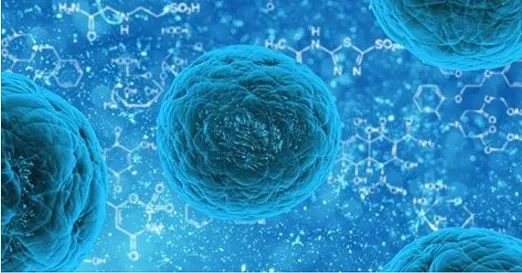
Vermehrung von Nabelschnurblut-Stammzellen als neue Hoffnung für Krebspatienten
Umbilical cord blood stem cells have been used in medicine for over 30 years to treat more than 80 different diseases such as leukemias, lymphomas and sickle cell anemia. In the field of regenerative medicine, the use of umbilical cord blood stem cells has also been shown to provide clinical benefits to patients. Because of its limitations, cord blood has been used more frequently in pediatric patients than in adults. However, the results of recent clinical trials show that the increased cord blood stem cells can also be successfully transplanted in adult patients. Umbilical cord blood stem cells are the hope of 21st century medicine. Currently, more than 3,000 studies are underway worldwide in various fields to explore the potential of stem cells. The results of a study on the use of augmented cord blood stem cells in the treatment of patients with blood cancers, published last week, show that cord blood stem cells grown in the laboratory and transplanted into patients are of significant clinical benefit. Omidubicel is the name of a preparation of hematopoietic cells from one unit of umbilical cord blood that have been propagated under laboratory conditions. A clinical trial evaluated its effectiveness compared with standard cord blood stem cell transplantation. The study lasted from January 2015 to January 2020 and included 125 patients aged 13 to 65 with blood cancers. Patients who received omidubicel achieved adequate white blood cell recovery 10 days earlier than patients who underwent standard therapy. They also had faster platelet recovery [up to 42 days vs. 90 days], a lower incidence of bacterial or invasive fungal infections (37% vs. 57%), and spent more time out of the hospital in the first 100 days after transplantation than patients in the control group. The proliferation of hematopoietic cells was the Holy Grail of hematology – an idea that, despite many attempts over decades, no one was able to realize. The results of this study show that the point has been reached where the number of cells no longer matters. Even more – the increased cells from cord blood can regenerate the hematopoietic system faster after transplantation. This could mean a wider introduction of this type of methods into clinical practice – says Emilian Snarski, MD, Medical Director of FamiCord Group. This is another study that shows the possibility of propagation of hematopoietic cells from cord blood and their effective use in the treatment of blood cancers. Thanks to such methods of proliferation of hematopoietic cells from cord blood, cord blood can be effectively used even if the number of collected cells was relatively small. Link to the abstractRead more


